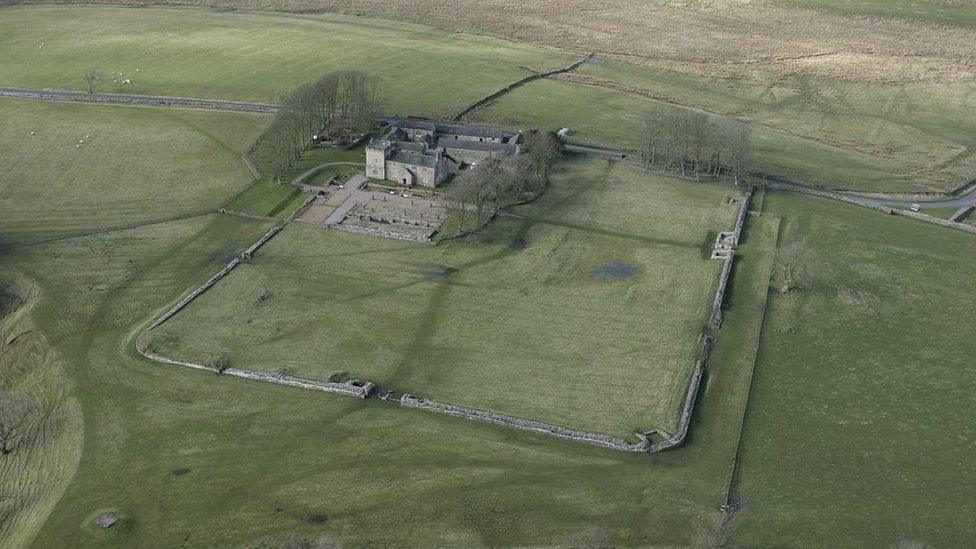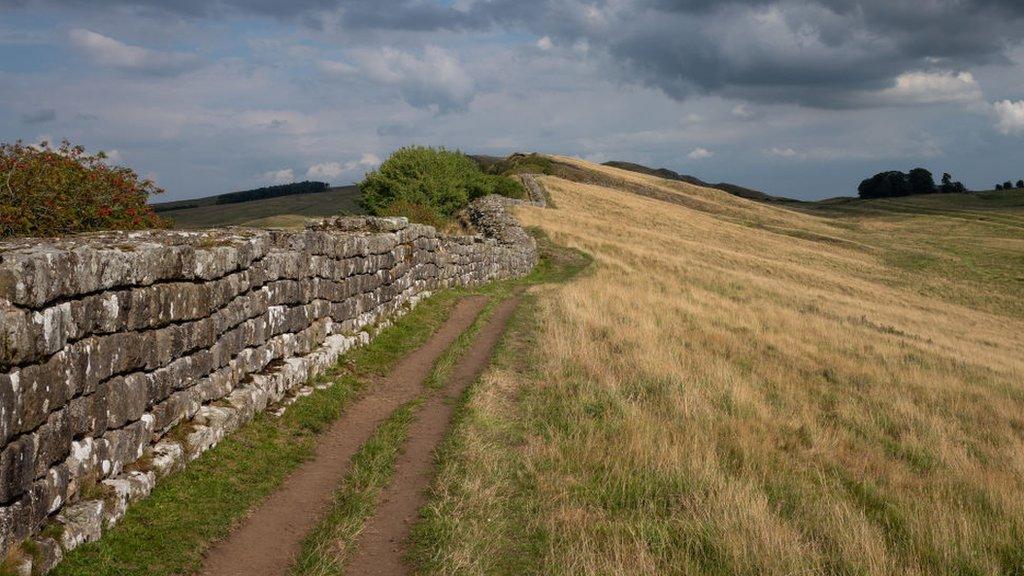Hadrian's Wall: 'Biggest dig for 30 years' aims to uncover secrets from the past
- Published
- comments

Hundreds of students have been taking part in the dig
The biggest archaeological dig at Hadrian's Wall in 30 years is under way and experts hope it will uncover more secrets from the past.
The wall was built 1,900 years ago in northern England to mark the boundaries of the Roman Empire and to keep the Scots out.
Historic England is working alongside Newcastle University on a five-year excavation programme.
Researchers say they hope to learn more about the daily lives of those who lived beside the structure.

About 800 soldiers were based at Birdoswald Roman fort some 1,900 years ago
The project is centred at Birdoswald fort and is looking at houses, communal buildings and workplaces beyond the fort walls.
More than 200 archaeology students, using the latest equipment, have joined the dig since it began in 2021.
Findings so far suggest the settlement beyond the fort walls was carefully planned, and that specific activities relating to everyday life took place in designated zones.
Experts say the project could help us learn more about the relationships between civilian and military life on the Roman frontier.
When was Hadrian's Wall built?

The wall was built to guard the north-west boundary of the Roman Empire
In about 122 AD, Emperor Hadrian ordered a wall to be built between the Solway and the Tyne to guard the north-west boundary of the Roman Empire.
It was built within about six years and measured some 120km long, separating the Romans from the Caledonian tribes north of the wall, whom they often fought.
There were special forts at intervals along the wall so that Roman soldiers could protect their border.
Hadrian's Wall is now a World Heritage site, meaning it has special protections.
- Published29 July 2022

- Published23 May 2019

- Published10 March 2022

